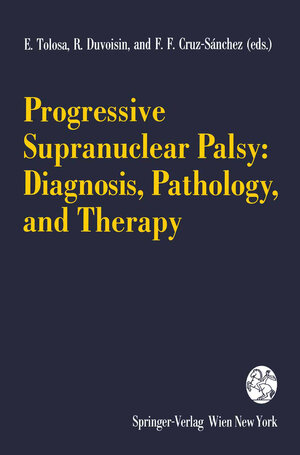
×
![Buchcover ISBN 9783709166413]()
Progressive Supranuclear Palsy: Diagnosis, Pathology, and Therapy
herausgegeben von E. Tolosa, R. Duvoisin und F.F. Cruz-SanchezWhen Steele, Richardson and Olszewski described Progressive Supranuclear Palsy in Archives of Neurology in 1964, it was thought to be a rare disease. Recent pathological studies of large numbers of patients diagnosed as having Parkinson's disease in life have highlighted the fact that at least one in ten of such cases have some other condition. Progressive Supranuclear Palsy is one of the commonest alternative diagnoses. This book is therefore a timely review of present understanding of Progressive Supranuclear Palsy. Much has been learnt about this sporadic illness of middle and late life although its cause remains unknown, and its treatment continues to be difficult. The Editors have selected a team of authors who review the clinical aspects, neuro-imaging find ings, neuropathology, neurochemistry, epidemiology, and therapy of Progres sive Supranuclear Palsy. All are to congratulated on producing an excellent and detailed picture of contemporary knowledge of the condition. Anyone interested in Progressive Supranuclear Palsy cannot do better than to start by reading this book. It is to be hoped that it will prompt further investigation to establish its cause and cure. C. D. MARSDEN, London Preface Progressive Supranuclear Palsy (PSP) is a neurodegenerative disorder charac terized clinically by the appearance of a supranuclear gaze palsy and extra pyramidal features which include bradykinesia and axial dystonia. Postural instability and falls and frontal-type behavioural and cognitive disturbances complete the clinical picture of this progressive disorder.



